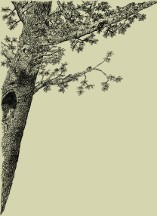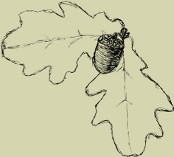42 41 40 39 38 37 36 35 34 33 32 31 30 29 28 27 26 25 24 23 22 21 20 19 18 17 16 15 14 13 12 11 10 9 8 7 6 5 4 3 2 1
Zeszyt 11 (1972)
Despite distinct trends towards the increase in chemical and physical-chemical processing of wood, the quality of wood will remain of serious economic importance also in the future. Studies on the effect of various factors on wood quality remain to be important.
Author studied the relationship between the dynamics of diameter increment in pine trees at the age of up to 30 years and the quality of wood at the cutting age. The direct purpose of this work was to determine the degree of relationship between mean width of annual increment rings during the first, second, and third decade of trees life and the future quality of pine wood.
Author applied a classification into four quality groups taking the length of butt-end faultless portion as a principal criterion of quality. Studies were carried out in eleven forest districts situated on the Szczecin Lowland. In these forest districts, in mature stands 56 plots were identified representing various types of forest site and indices of site quality from I up to IV. On each plot three standing trees at various quality classes were selected in a representative manner, 569 trees were selected altogether. On butt-end cross-section increments during individual periods were measured and then mean widths of annual increment rings were calculated. Coefficients of correlation between mean width of annual increment rings during different periods and the price of pine sawn timber were determined.
The obtained results indicate that there is a relationship between the dynamics of diameter increment in pine trees at the age of up to 20 years (in all classes of site quality index) and wood quality at cutting age. Along with an increase in the width of annual increment rings wood quality decreases. Beginning with the 20th year of trees life the effect of the width of annual increment rings upon wood quality starts to cease. It may be explained by the inclusion of an additional factor — the intensity of overgrowing of knots and swellings in butt-ends of trees. High correlation between the mean width of annual increment rings and the price of pine sawtimber occurs during both the first and second decades, expressed by the size of correlation coefficient from −0.87 to −1.00.
On the background of results obtained author arrived at the conclusion that establishing young plantations of pine in a loose spacing results in a considerable impairment of the wood quality. He developed a number of silvicultural and managerial conclusions, among others concerning the identification of forest regions and areas most suitable for the production of wood of the highest quality and their adequate management.
The author carried out studies consisting in the evaluation of the recent economic situation of inaccessible forests (120,000 ha) in the light of sources being at the disposal of provincial boards of state forests and bodies of planning in provincial national boards, in the development of forecast of their management in the course of the nearest 30 years (1970-2000) in the light of trends outlined in contemporary highly industrialized countries and based on so-called model method, and in the determination of quantitative limits of the optimization of relating these forests with demands of woodworking industry and national culture.
The investigations are of the nature of studies on fundamental problems of rational management in inaccessible forests in Poland, aim at the verification of opinions of a priori nature to be met until now in life, and their direct task consists in an attempt of the determination of procedural foundations of balancing outlays and effects of long-term forestry, recreational, and infrastructural investments.
As a results of investigations it was determined that:
1. the optimal limit of economic integration of inaccessible forests in the Polish People's Republic with the local woodworking industry occurs under conditions of minimization of production and timber skidding costs when the average density of the network of forest roads approaches the index of 40 m/ha leading to the agglomeration of industry;
2. optimal limits of the integration of inaccessible forests in the Polish People's Republic with cultural demands of the society, mainly in the form of organized recreation after work correspond with higher indices of road network between 50 and 100 m/ha and more, requiring adequately increased investments for purposes of forestry and infrastructure indispensable for the increase in frequentation and attractiveness of touristic and recreational traffic in high mountain forests;
3. investment outlays for the achievement of optimal limits of the economic and cultural integration of inaccessible forests are, in general, redeemed within one investment cycle;
4. direct effects from the rational releasing of raw-material reserves in inaccessible forests of the Polish People's Republic are completely covering outlays on fundamental forest nestments, including also forest roads which do not require any central state investments.
As a result of carried out examination it was found that the coating formed in surface layers of wood through double plating with preparations Dinol, Nitrol, light Termit, dark Termit, Xylamit Super, and Xylamit Popular ten years ago acts still fatally towards Hylotrupes bajulus L. larvae assuring wood protection against this pest. Under the same circumstances distilled Xylamit and Xylamit Super W do not assure the complete protection of wood against H. bajulus. The full protection of wood against H. bajulus after ten years since the application of both the latter preparations is obtained only through a deep wood treatment. During the first five years since the date of wood treatment the greatest decline in toxicity of all the examined preparations against insects was found. After next five years the further decline in toxicity was found only in the case of one preparation. The toxicity of the remaining seven preparations was maintained at the same level as after the first five years.
Birch wood was modified with styrene and methyl methacrylate monomers introduced into wood substance by means of impregnation after evaluation of air. Monomers were polymerized in wood by heat treatment using lauroyl peroxide as an initiating agent.
Swelled to maximum samples of wood-polymer composite, with different polymer content, were compressed across the grain at 20, 40, 60 and 80°C temperature.
It was found that wood modified with styrene and methyl methacrylate monomers, is less susceptible to deformation due to compressive stresses applied across the grain than untreated wood when the same compressive forces and temperatures are used. The immediate strain which occurs after modified wood is loaded, decreases with temperature rise i comparison with the strain of natural wood at the same temperature. Strain increment in radial direction after 1 hour of modified wood loading at 60°C temperature, expressed in percentage of the strain at 20°C temperature, is more than four time lower than strain increment of matched samples prepared from untreated wood. Limiting temperature at which rapid creep occurs, is higher for modified wood in comparison with untreated one, the difference being the larger the higher is polymer content of wood. The practical implication of this fact is that modified with polymer wood compressed across the grain, is more resistant to the action of temperature than untreated natural wood.
Wood as a construction material is not free from some drawbacks among which relatively poor dimensional stability can be regarded as one of most important. Several years ago, extensive research has been initiated aimed at the improvement of this vital property. Also n this work it was intended to find and determine the effect of poplar wood modification with the compound Izocyn PP-85 and mixture of Izocyn PP-85 with Izocyn PT (Desmodur L) on changes in dimensional stability, hygroscopicity, water absorption capacity, and static bending strength of modified wood.
Dry poplar wood was treated after air evacuation, with treating solution under the pressure of 390 kPa during 3 hours time. Samples of 35 × 35 × 150 mm treated this way, were then conditioned during 3 month period under room conditions of the laboratory, and subsequently subject to testing.
Test results demonstrated that the antishrink efficiency of modified poplar wood in the initial process of moistening was 40-60, and after 6 weeks of moistening only 13-35. Index of hygroscopicity decrease was 38-55, and index of water absorption capacity 70-81.
Static bending strength of modified poplar wood, at 8% moisture content, increased by about 60% in relation to untreated wood. When modified wood was tested in state of maximum swelling, static bending strength featured by swelled to maximum 92%. Higher increase of static bending strength featured by swelled to maximum modified poplar wood, can be probably attributed to permanent bonding occurring between wood substance and the part of isocyanates absorbed, which resulted in lower moisture content of cell walls in maximum swelled wood. This phenomenon explains lower decrease of the strength of wet modified wood in comparison with wet untreated one.















 Pobierz PDF
Pobierz PDF